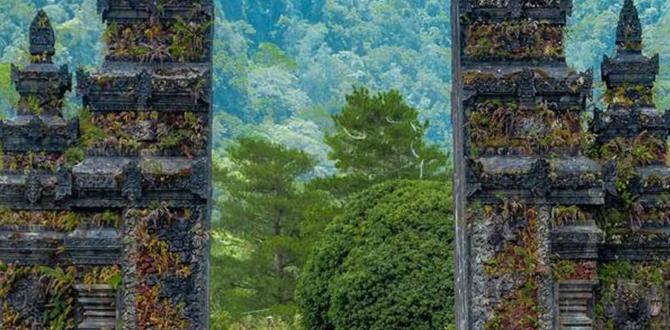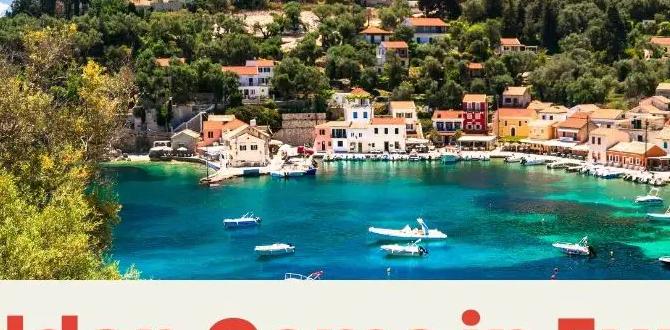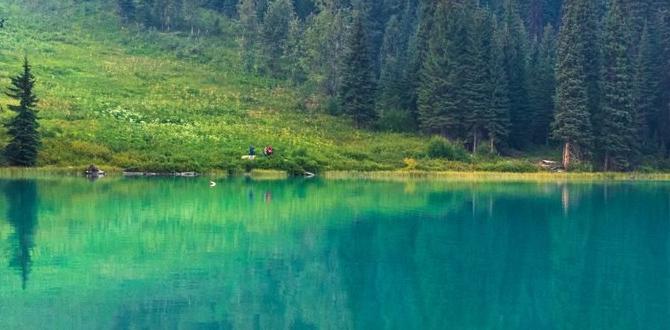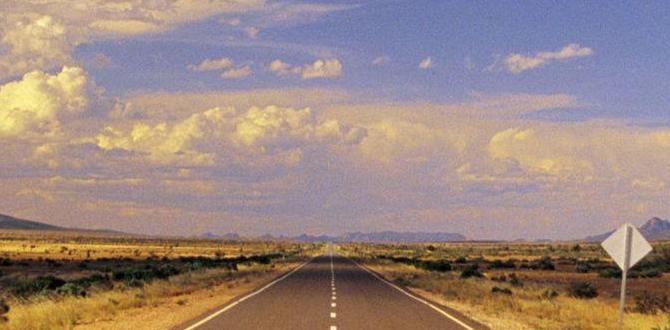Basque Country Sunrise & Sunset Photo Spots: Essential Guide
Capture the magic of the Basque Country at dawn and dusk with our essential guide. Discover breathtaking locations for sunrise and sunset photography, from dramatic coastlines to charming villages. We’ll help you find the perfect spots to create unforgettable memories and stunning photos, making your trip truly special. Get ready to plan your picture-perfect Basque adventure!
The Basque Country, a land of rugged coastlines, rolling green hills, and vibrant culture, offers some of the most spectacular natural light shows in Europe. Imagine the sky ablaze with color as the sun dips below the horizon or paints the landscape with golden hues at first light. While many travelers flock to the region for its delicious pintxos and lively festivals, few truly unlock its photographic potential during these magical hours. Planning where to go can feel overwhelming, especially if you’re new to landscape photography or simply want to experience the best the Basque Country has to offer. Don’t worry, we’ve got you covered! This guide simplifies your quest, pointing you towards easily accessible and jaw-dropping locations. We’ll break down the best spots for both sunrise and sunset, ensuring you’re well-prepared for an unforgettable visual journey. Prepare to be inspired as we reveal the secrets to capturing the Basque Country’s most beautiful moments.
Understanding Basque Country Light: A Photographer’s Primer
The unique geography of the Basque Country, with its significant coastline along the Bay of Biscay and its mountainous interior, creates distinct lighting conditions. The sea air, often carrying a misty haze, can diffuse sunlight, creating soft, ethereal glows during sunrise and sunset. Conversely, clear days can offer sharp, dramatic shadows and vibrant colors. Understanding the time of year also plays a role; summer months generally offer longer daylight hours and warmer tones, while autumn can bring moody skies and dramatic cloud formations perfect for photography.
The Golden Hour: What It Is and Why It Matters
Photography’s “golden hour” refers to the period shortly after sunrise and before sunset. During this time, the sun is low in the sky, producing a warm, soft light that is ideal for photography. This light reduces harsh shadows, creates beautiful color saturation, and adds a magical glow to landscapes. For sunrise and sunset photography, timing is everything. Researching specific sunrise and sunset times for your travel dates is a crucial first step. Websites like Time and Date offer reliable local sunrise and sunset information, which is essential for planning your photo expedition.
Top Basque Country Sunrise Photo Spots
Waking up early might not be everyone’s favorite travel activity, but the reward of witnessing and capturing a Basque Country sunrise is immeasurable. The quiet solitude, the gentle awakening of the land, and the explosion of color are truly special.
1. San Juan de Gaztelugatxe: A Dramatic Silhouette
This iconic islet, connected to the mainland by a winding stone bridge, is a UNESCO World Heritage site and a photographer’s dream. At sunrise, the islet and its hermitage stand as a stark, dramatic silhouette against a sky often awash with pastel hues or fiery oranges.
Why it’s great for sunrise:
- The silhouette of the hermitage and bridge against the evolving sky is incredibly photogenic.
- The relative quiet of early morning allows for focused photography without crowds.
- The rugged coastline provides a stunning natural frame for the scene.
Getting there: The easiest access is via Bakio. Be prepared for a walk down to the islet and back up, so comfortable footwear is essential. Aim to arrive at least 30-45 minutes before sunrise to find your spot and set up.
2. Zumaia’s Flysch: Geological Wonders Bathed in Light
Famous for its dramatic, layered rock formations (the Flysch), Zumaia offers a unique photographic opportunity at sunrise. The ancient rock strata, sculpted by millennia of natural forces, catch the first rays of light, revealing intricate textures and patterns.
Why it’s great for sunrise:
- The geological formations create abstract and captivating compositions.
- The soft morning light highlights the textures and colors of the rock.
- The sound of the waves adds a calming atmosphere for photographers.
Getting there: Access points are available from the town of Zumaia, with paths leading down to the beaches and rock formations. Check tide times, as some areas may be more accessible at lower tides.
3. Pasaia Donibane (San Juan): Coastal Village Charm
This picturesque fishing village, with its colorful houses built right up to the water’s edge, is enchanting at sunrise. The calm waters of the bay reflect the soft morning light and the building facades, creating a peaceful and inviting scene.
Why it’s great for sunrise:
- The colorful buildings and reflections offer classic postcard scenery.
- The serene bay provides a tranquil setting for photography.
- The fishing boats gently bobbing in the water add a touch of local life.
Getting there: Pasaia Donibane is accessible by car or public transport. You can often get excellent vantage points from the waterfront promenade.
4. The Aralar Range: Mountain Vistas and Valley Mist
For a different perspective, head inland to the Aralar mountain range. At sunrise, mist often blankets the valleys below, creating a mystical, dreamlike landscape. The peaks themselves are illuminated by the first golden light.
Why it’s great for sunrise:
- Offers expansive panoramic views of rolling hills and valleys.
- The potential for dramatic mist-filled valleys adds depth and atmosphere.
- A chance to capture the rugged beauty of the Basque interior.
Getting there: Various hiking trails and mountain roads provide access. Research specific viewpoints like the Txindoki mountain area for stunning vistas.
Top Basque Country Sunset Photo Spots
As the day draws to a close, the Basque Country transforms into a canvas of warm colors. Sunsets here can be dramatic, soft, or intensely vibrant, depending on the weather and location.
1. La Concha Beach, San Sebastián: Urban Beauty Meets Coastal Glow
San Sebastián’s iconic La Concha beach offers a stunning urban sunset. The curving bay, the island of Santa Clara, and the elegant promenade are bathed in the warm, fading light of the sun.
Why it’s great for sunset:
- The classic curved beach provides a beautiful foreground.
- The island and distant hills create layers in your composition.
- You can capture both the natural beauty and the city’s charm.
Getting there: Easily accessible within San Sebastián. Plenty of vantage points along the promenade offer excellent views.
2. Cabo Machichaco: Coastal Drama and Atlantic Views
This dramatic cape in Bermeo offers breathtaking views of the Atlantic Ocean, perfect for capturing the sunset. The rugged cliffs and the historic lighthouse provide a compelling focal point against the fiery sky.
Why it’s great for sunset:
- Expansive ocean views for uninterrupted sunset vistas.
- The lighthouse adds a man-made element of interest.
- The rugged coastline creates a sense of raw, natural beauty.
Getting there: Accessible by car, with pathways leading to viewpoints near the lighthouse. Be mindful of cliff edges and wear sturdy shoes.
3. Sopelana’s Cliffs: Surfers and Sunsets
Sopelana is renowned for its surf culture and its spectacular cliffs overlooking the Bay of Biscay. At sunset, the golden light illuminates the waves and the surfers, creating dynamic and exciting photographic opportunities.
Why it’s great for sunset:
- Captures the energy of surfers against a beautiful natural backdrop.
- The cliffs provide elevated viewpoints for stunning compositions.
- The colors reflecting on the wet sand and sea are often spectacular.
Getting there: Accessible from Sopelana town, with cliff-top paths and viewpoints. Parking is available in the vicinity.
4. Mundaka: The “Wave” Town at Dusk
Mundaka is famous for its world-class left-hand wave, but it’s also a beautiful place to experience sunset. The fishing harbor, the estuary, and the distant mountains create a picturesque scene as the sun descends.
Why it’s great for sunset:
- Capture the unique estuary landscape with its boats and bridges.
- The calm waters can offer beautiful reflections.
- Opportunity to photograph the iconic surf break in softer light.
Getting there: Mundaka is a charming coastal town. You can find good sunset views from the waterfront or harbor areas.
Essential Gear for Your Photo Adventure
While a smartphone can capture great moments, a few key pieces of equipment can significantly elevate your sunrise and sunset photography in the Basque Country.
Cameras and Lenses
DSLR or Mirrorless Camera: Offers more control over settings like exposure, aperture, and shutter speed, which are crucial for capturing the range of light during sunrise and sunset.
Wide-Angle Lens (e.g., 16-35mm): Ideal for capturing sweeping landscapes and the vastness of the sky.
Mid-Range Zoom Lens (e.g., 24-70mm): Versatile for capturing both broader scenes and details within the landscape.
Tripod: The Unsung Hero
This is perhaps the most critical piece of gear for low-light photography. A sturdy tripod allows for long exposure shots, sharper images, and creative effects like blurred water.
Stability: Prevents camera shake, especially in windy coastal conditions.
Low Light Performance: Essential for capturing detail in the dark hues of dawn and dusk.
Composition: Gives you time to carefully compose your shot without rushing.
Filters
Neutral Density (ND) Filters: Reduce the amount of light entering the lens, allowing you to use longer shutter speeds even when there’s still some light. This is great for smoothing out waves or clouds.
Graduated Neutral Density (GND) Filters: Help balance the exposure between a bright sky and a darker foreground, ensuring both are properly exposed in a single shot.
Other Essentials
Extra Batteries: Cold weather and long exposures drain batteries quickly.
Cleaning Cloth: To keep your lenses free of sea spray or dust.
Headlamp or Flashlight: For navigating in the dark before sunrise or after sunset.
Comfortable, Weather-Appropriate Clothing: Layers are key, as coastal weather can change rapidly. Waterproofs are a must for the Basque Country!
Sturdy Footwear: For navigating uneven terrain and cliff paths.
Planning Your Photography Trip
Successful sunrise and sunset photography involves more than just showing up. Careful planning ensures you make the most of your opportunities.
Timing is Everything
As mentioned, knowing the exact sunrise and sunset times for your location and date is paramount. Apps like PhotoPills or The Photographer’s Ephemeris can be invaluable for planning composition based on the sun’s position.
Weather Watch
The Basque Country’s weather can be unpredictable. While a clear sky can be beautiful, dramatic cloud formations often make for more compelling sunset and sunrise shots. Monitor weather forecasts closely. A bit of rain or fog can add atmosphere, but for safety, ensure you’re prepared for all conditions.
Scout Locations
If possible, visit potential photo spots during daylight hours. This helps you identify the best angles, potential hazards, and accessibility issues without the pressure of a rapidly changing light situation. Familiarizing yourself with smartphone Google Street View can also offer a preliminary scout without leaving your home.
Pack Smart
Given the focus on comfort and stress-free travel that Journey Essentials champions, packing smart is key. For photography trips, this means balancing your gear with essential personal items. If you are traveling with family or have specific needs, consider packing items like adult diapers or child diapers for peace of mind during early mornings or late evenings away from facilities, ensuring your focus remains on the breathtaking scenery.
Sample Itinerary: Basque Country Photo Weekend
Here’s a possible itinerary focusing on key sunrise and sunset spots, designed for a long weekend.
| Day | Morning (Sunrise) | Afternoon | Evening (Sunset) |
| :—- | :——————————- | :————————————— | :————————————- |
| Day 1 | San Juan de Gaztelugatxe | Explore Bermeo, lunch | Cabo Machichaco |
| Day 2 | Zumaia’s Flysch | Travel to San Sebastián, explore the city | La Concha Beach, San Sebastián |
| Day 3 | Sunrise over San Sebastián (optional, from Monte Urgull) | Explore Pasaia Donibane, short boat trip | Return journey or explore more |
Note: This is a sample. Adjust based on your interests, pace, and travel style. Always check accessibility and opening times for any specific sites.
Basque Country Photography Etiquette
When you’re out capturing those magical moments, remember to be respectful of the environment and other visitors.
Respect Private Property: Always stay on public paths and do not trespass on private land.
Leave No Trace: Pack out everything you pack in. Take your trash with you.
Maintain Quiet: Especially during early mornings, keep noise levels down.
Be Courteous to Other Photographers: Share viewpoints and be mindful of their shots.
Follow Local Regulations: Some natural parks or protected areas might have specific rules regarding drone usage or entry times.
Frequently Asked Questions (FAQ)
What is the best time of year for photography in the Basque Country?
The best time can depend on what you want to capture. Spring (April-May) offers blooming landscapes and milder weather. Summer (June-August) provides long daylight hours and vibrant greens, though it can be busier. Autumn (September-October) is excellent for dramatic skies, changing foliage in the interior, and fewer crowds. Winter can offer moody light and dramatic seascapes, but weather can be harsh.
Do I need a special camera for sunrise and sunset photos?
While a high-end camera can offer more creative control, modern smartphones are incredibly capable of capturing excellent sunrise and sunset images. The key is understanding composition, light, and using the right settings available on your device. If you’re serious about photography, a DSLR or mirrorless camera with interchangeable lenses will provide more flexibility.
Are there any safety concerns for photographers in the Basque Country?
Yes, safety is important. Coastal areas can be exposed and weather can change quickly. Be aware of cliff edges, uneven terrain, and tides. In remote areas, let someone know your plans. Always check weather forecasts. For early morning or late evening shoots, ensure you have adequate lighting like a headlamp. Standard travel precautions apply regarding personal belongings in urban areas.
Can I use a drone for photography in the Basque Country?
Drone regulations vary by country and region. In Spain, including the Basque Country, drone usage is regulated by the State Aviation Safety Agency (AESA). You will need to register your drone, understand flight restrictions (e.g., proximity to airports, populated areas, national parks), and potentially obtain specific permissions. It’s crucial to research and comply with all current regulations before flying. You can find up-to-date information on the AESA website.
What are some good indoor photo opportunities in the Basque Country if the weather is bad?
The Basque Country offers fantastic indoor options even when the weather is not cooperating for landscapes. Consider the Guggenheim Museum Bilbao for its modern architecture and impressive art collection, the San Telmo Museoa in San Sebastián for Basque history and culture, or explore the charming arcades of cities like Bilbao and San Sebastián for street photography opportunities sheltered from the rain. Historic churches and local markets also provide subject matter.
How can I capture the movement of the sea during sunrise or sunset?
To capture the movement of the sea, especially the smooth, ethereal look of water or clouds, you’ll need a tripod and a slow shutter speed. Using an ND filter can help you achieve this even in brighter conditions. Experiment with shutter speeds ranging from a few seconds for silky water to 30 seconds or longer for a more dramatic, blurred effect against the static elements of the landscape.
What are the best spots for both sunrise and sunset without having to travel too far between them?
San Sebastián offers excellent options for both: La Concha beach is superb for sunset, and parts of Monte Urgull or Monte Igueldo provide elevated viewpoints for sunrise over the city and bay. Similarly, exploring the coast around Bilbao, you could photograph a sunrise over the estuary or nearby coast and then head to locations like Sopelana or Mundaka for sunset. Having a car will offer the most flexibility to cover diverse locations efficiently.
Conclusion: Your Basque Adventure Awaits
The Basque Country is a land of unparalleled beauty, and its sunrises and sunsets are truly a spectacle to behold. Whether you’re a seasoned photographer chasing the perfect light or a traveler simply wanting to capture a cherished memory, the locations mentioned in this guide offer something extraordinary. From the dramatic cliffs of Gaztelugatxe to the serene waters of La Concha, each spot provides a unique canvas for the sky’s daily masterpiece.
Remember, the best photo often comes from patience, a little planning, and an openness to serendipity. Don’t be afraid to explore off the beaten path, embrace the unpredictable Basque weather, and immerse yourself in the moment. With your camera ready and a sense of adventure, you’re all set to capture the magic of a Basque Country sunrise and sunset. Happy shooting, and enjoy every stunning vista!






